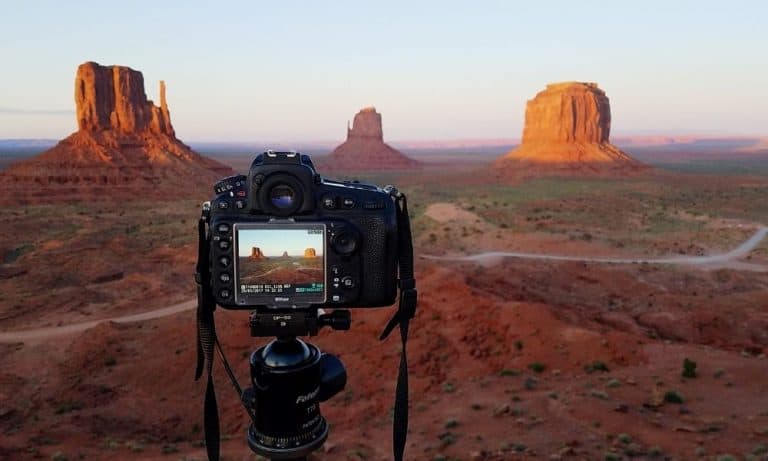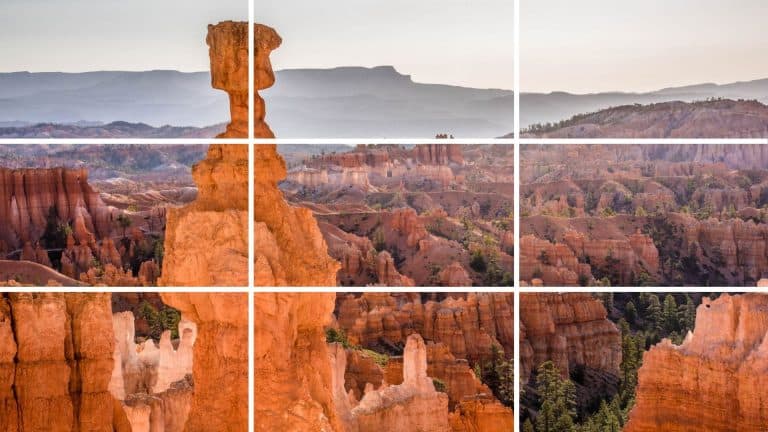Why Horizon Line is Important for Landscape Photography
Understanding horizon line in photography allows you as the photographer to use the horizon line to highlight certain aspects of an image, create impact, and compose a unique shot that is pleasing to the viewer.
Learning about horizon lines, and why it’s important for landscape photography, is one of the basic photography techniques to master.
Did you know that you can change the overall feel of your photo just by moving the horizon line within your shot?
The horizon line, which separates the foreground from the sky, is an important element in landscape scenes.
Finding the horizon line in your scene and figuring out where to place it in your photo takes practice.
It’s worth your time to experiment with different compositions to create unique photos with just a few simple adjustments.
Some of the links on this site are affiliate links, meaning if you book or buy something through one of these links, we may earn a small commission – at no extra cost to you! Read the full Disclosure Policy.
Take a look at the Horizon Line photography ideas shared by members of our Facebook Group, Your Photography Journey to illustrate this compositional technique.
WATCH the video as we discuss various composition techniques used in each image.
Camera Gear for Landscape Photography
- Tripod: take a look at these compact and lightweight travel tripods!
- Camera Bag: protect your camera from sand and water → We use Lowepro camera backpacks for outdoor photography.
- Neutral density filter: to compensate for variance of light you’ll need to use a neutral density filter. → Check out the Kase magnetic filters we use!
- Camera cleaning kit: remove dust or water that WILL get on your lens. NOTE: this is not for cleaning the sensor.
- Memory cards: purchase name brand memory cards since you’re trusting your images to the card! → We use Lexar and Sandisk!
- External hard drive: copy photos to a portable external hard drive ‘just in case’.
- Headlamp: use when taking sunrise and sunset photos!
HORIZON LINE PHOTOGRAPHY: WHAT IS IT AND WHY DOES IT MATTER?
So what exactly is a horizon line, anyway? In the simplest terms, it’s where the land or water meets the sky from the perspective of an observer.
The horizon is parallel to the ground, and therefore horizontal, but it is not always straight. The horizon line can include mountainous terrain or buildings of different shapes and sizes, and can even be disguised so that it is barely noticeable.
In photography, the horizon line can be used as an anchor point that will bring all of the elements in a photograph together.
Here are some tips for finding the horizon line in your scene, using it to create a striking composition, and ensuring that it is straight in your photo.
HOW TO FIND AND CAPTURE THE HORIZON LINE IN YOUR PHOTOS
When Nature Forms the Horizon Line
When you look at scenes in nature, there are many instances where you will be able to easily identify the horizon line.
In the photo below, there is a distinct horizontal line between the sky and the water.
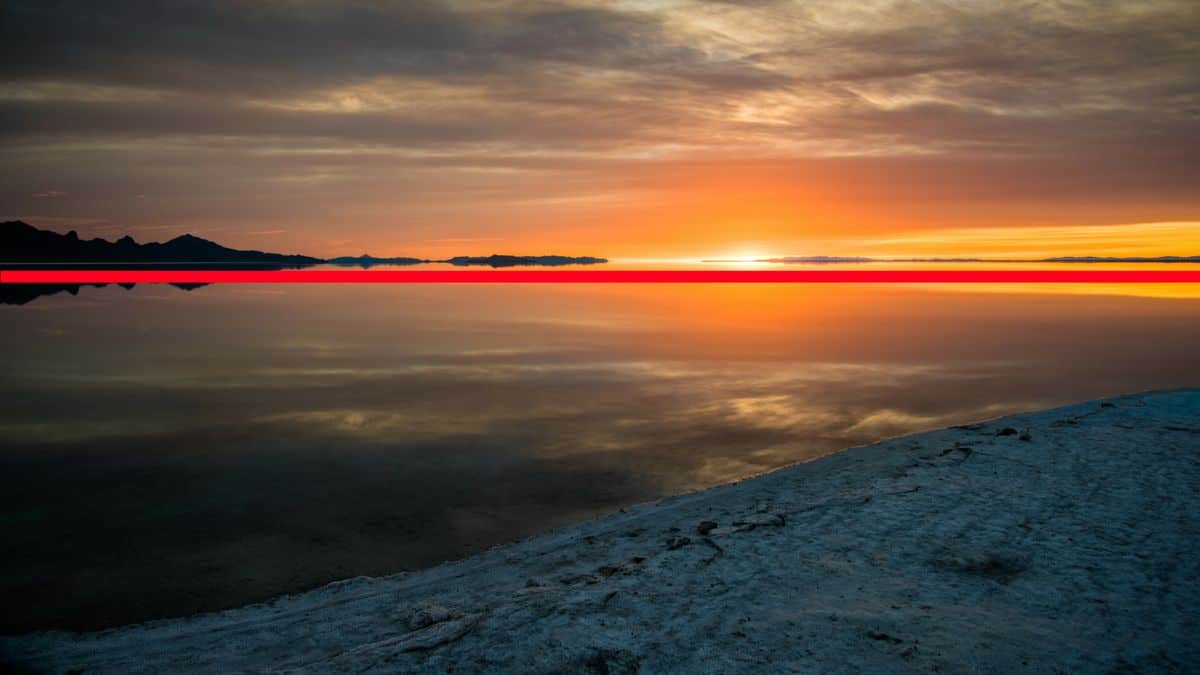 The horizon can easily be seen at the Salt Flats in Utah.
The horizon can easily be seen at the Salt Flats in Utah.
The horizon line is not so obvious in the image below, but you can still easily see where the land and sky meet.
 The horizon line can’t be readily seen at Needles Canyonlands.
The horizon line can’t be readily seen at Needles Canyonlands.
Straightforward horizon lines are easy to incorporate in your photos, but they do not always make for interesting subject matter.
When you are shooting landscapes with distinct or unbroken horizon lines, look for other interesting elements that you can highlight within the photo, such as trees or rocks in the foreground, or a dramatic sky in the background.
When Objects Form the Horizon Line
Sometimes, the horizon line is emphasized by man-made objects or other elements that can add interest to your photos. These scenes can be really fun to capture because the objects are adding to the overall composition while creating drama all on their own.
As you can see, the bridge over the river at Glacier National Park creates a distinct horizontal line between earth and sky that wouldn’t be easily visible otherwise.
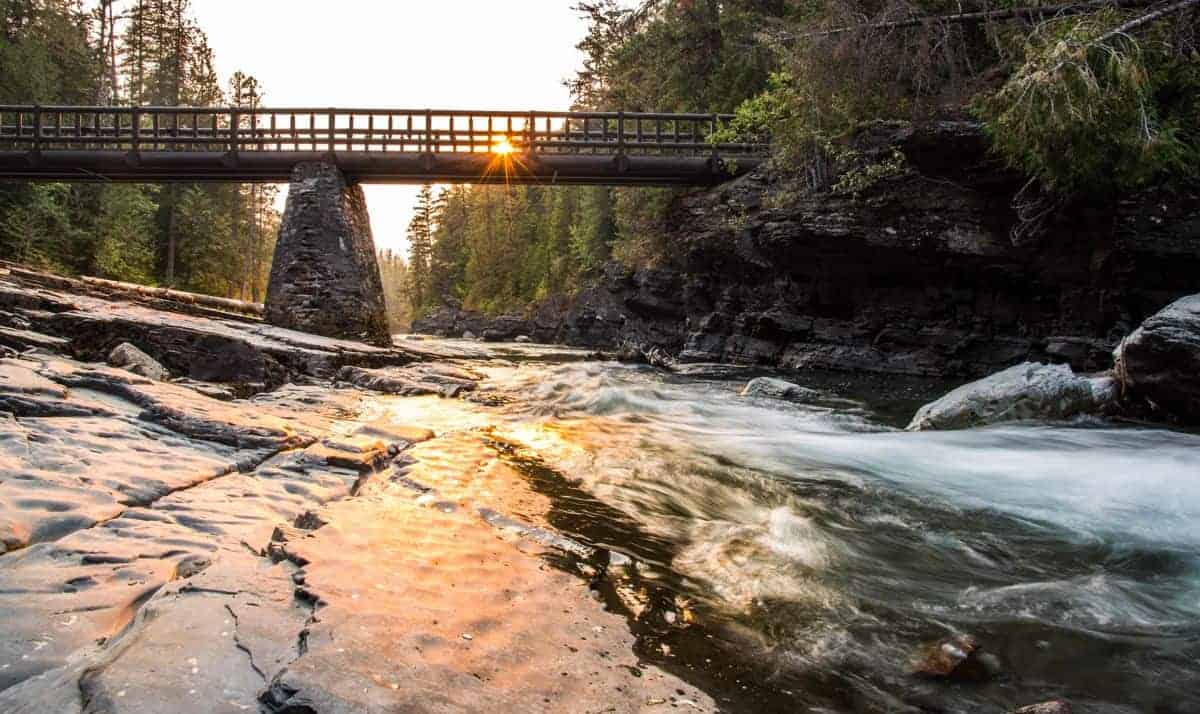 Bridge over McDonald River at Glacier National Park at sunset.
Bridge over McDonald River at Glacier National Park at sunset.
In this photo of McDonald Lake at Glacier National Park, it’s easy to see the natural horizon line between the water and the mountains.
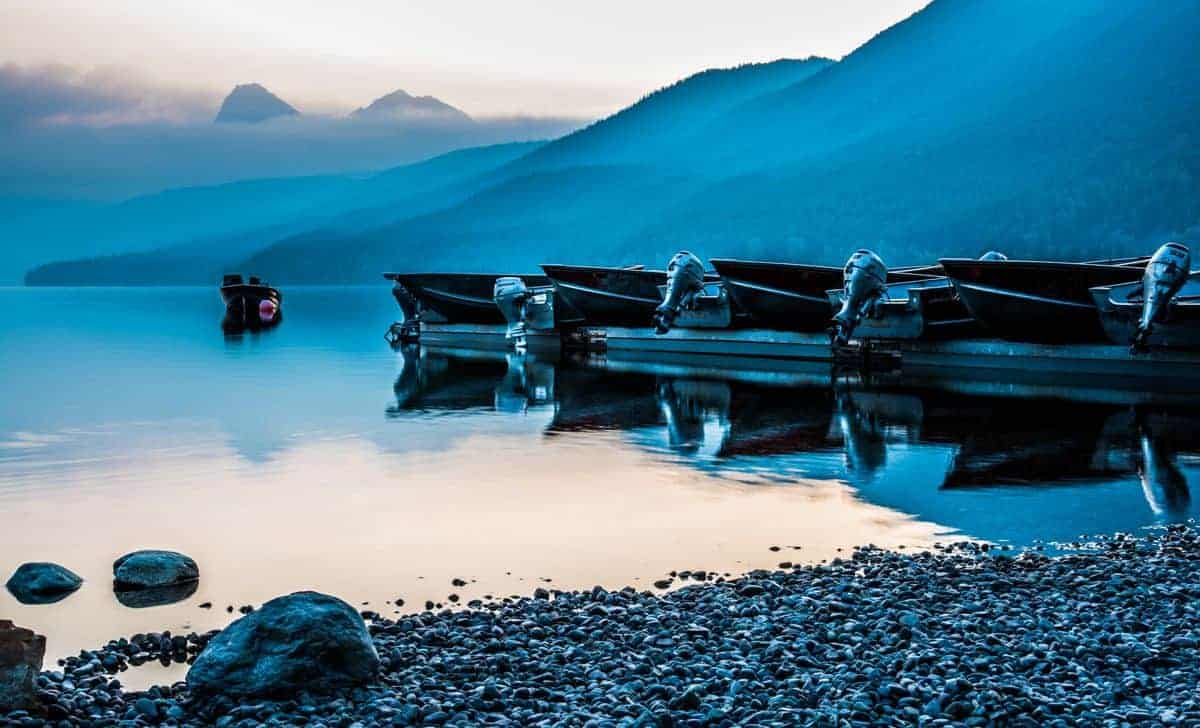 A row of boats at McDonald Lake in Glacier National Park.
A row of boats at McDonald Lake in Glacier National Park.
Including the row of boats in the scene creates added emphasis and interest between the foreground and background.
Using Vertical and Horizontal Lines to Frame Your Shot
When capturing a horizon line in your photo, it’s important that it is straight and not off-kilter.
Viewers will instantly notice a crooked horizon line, which will make the photo look and feel out of balance.
Unless you are purposely misaligning your horizon in order to create a more interesting composition, take the time to ensure that your horizon is straight.
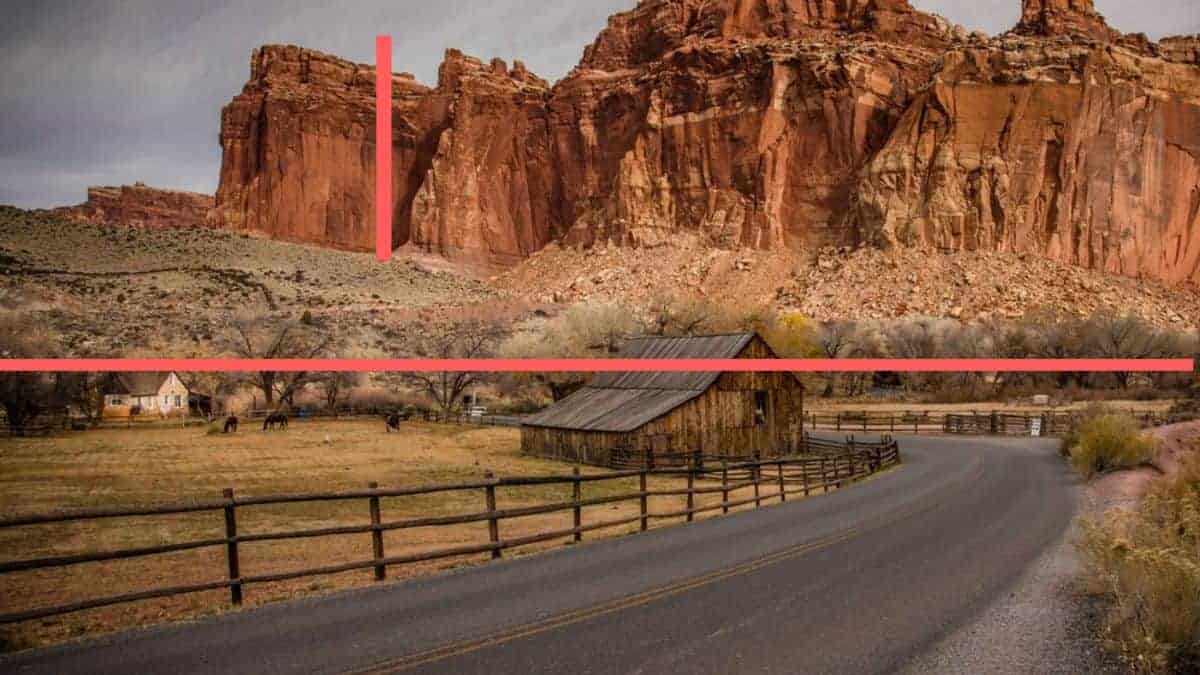 Use vertical and horizontal elements to make the image straight.
Use vertical and horizontal elements to make the image straight.
You can use both vertical and horizontal lines within your scene to create a harmonious and striking composition. These lines will also help you create 90 degree angles that will be perceived as balanced by your viewer.
These two scenes in American Southwest feature strong horizontal and vertical lines, making it easy to frame a balanced shot with a straight horizon line.
Of course, not all lines in nature are vertical or horizontal, so sometimes you have eyeball your scene and make a judgement on how to hold your camera.
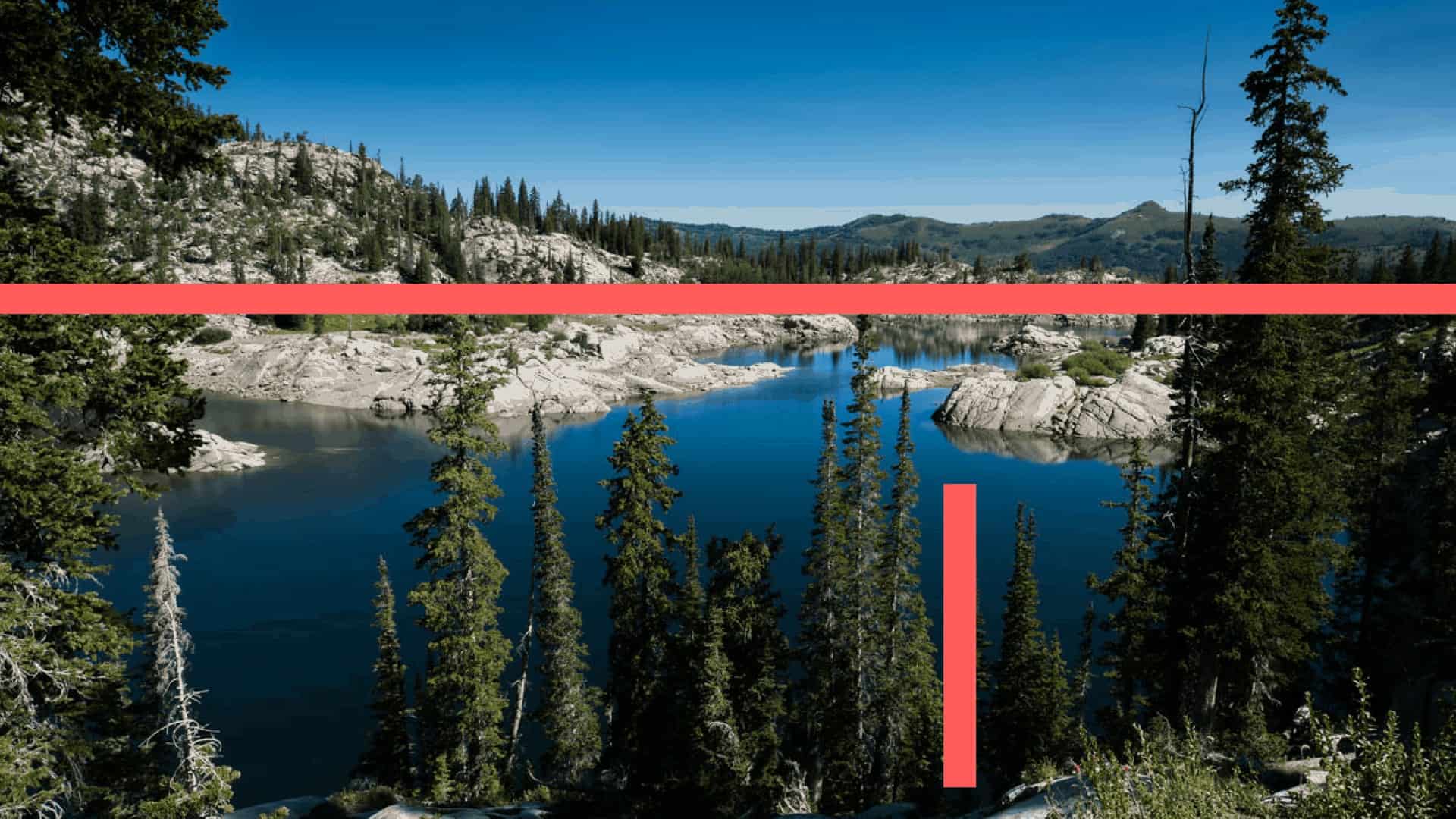 Do your best to find vertical and horizontal elements to make the photo straight.
Do your best to find vertical and horizontal elements to make the photo straight.
In this mountain scene, you’ll notice that many of the trees are not growing straight, which may make the scene feel a bit off. In a situation like this, just do the best you can by aligning your camera with the horizon and a tree that appears to be straight.
More Tips to Capture a Straight Horizon Line
Use the grid view on your camera – Most cameras will allow you to shoot with a grid overlay over your viewfinder or LCD screen. This can be really helpful when shooting without a tripod.
Use the bubble level on your tripod – A bubble level is great for shooting on uneven surfaces and slopes. If your tripod doesn’t have one, you can buy small bubble levels that will fit into the hot shoe of your camera.
Adjust your horizon line with your editing software – If you get home and find that your horizon line is totally out of whack, it is pretty easy to adjust using the crop feature in your editing software.
CHANGING THE POSITION OF THE HORIZON LINE CAN ADD DRAMA TO YOUR PHOTOS
As you begin experimenting with the horizon line in your photos, you will start to notice that where you place it within your photo makes a huge difference, depending on the elements of the photo you are trying to highlight.
Using a Low Horizon Line
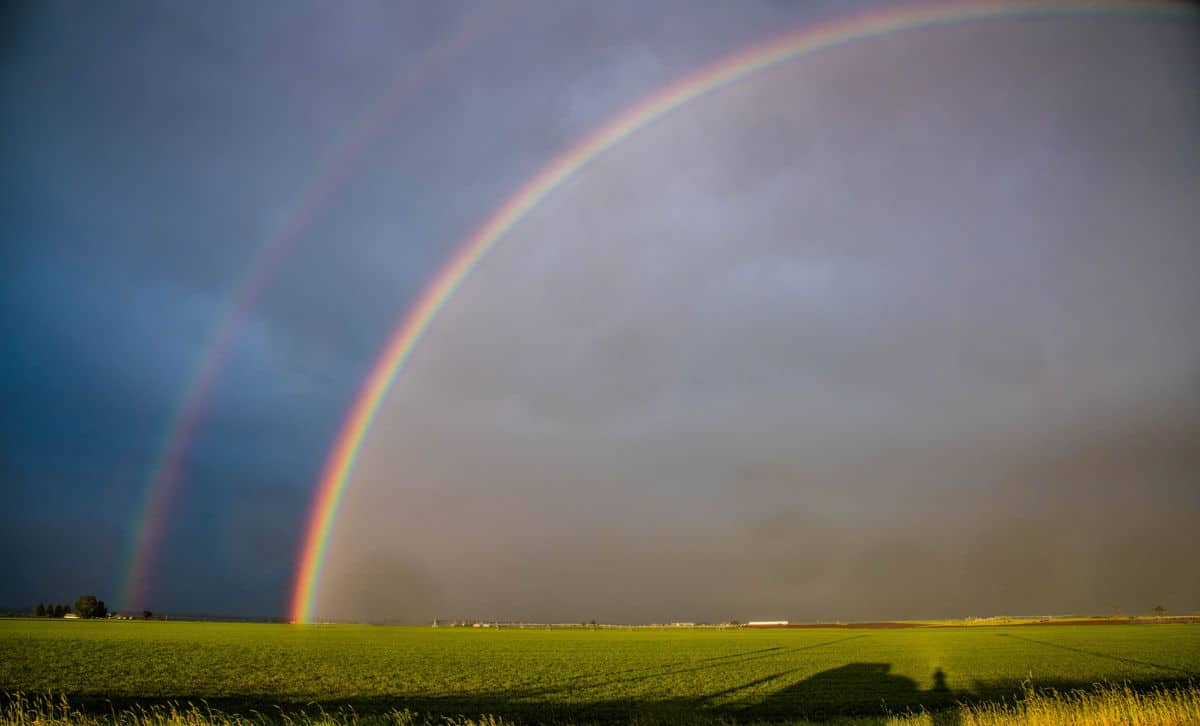 Use a low horizon line to emphasize the sky.
Use a low horizon line to emphasize the sky.
A low horizon line is useful when you want to highlight a dramatic sky. If an amazing rainbow or a bank of storm clouds are the most interesting aspect of your scene, it makes sense to highlight them by lowering your horizon and making the sky the center of attention.
Using a High Horizon Line
By contrast, a high horizon is useful when your sky is a blank slate and you want to highlight the foreground, objects, or people within your photo.
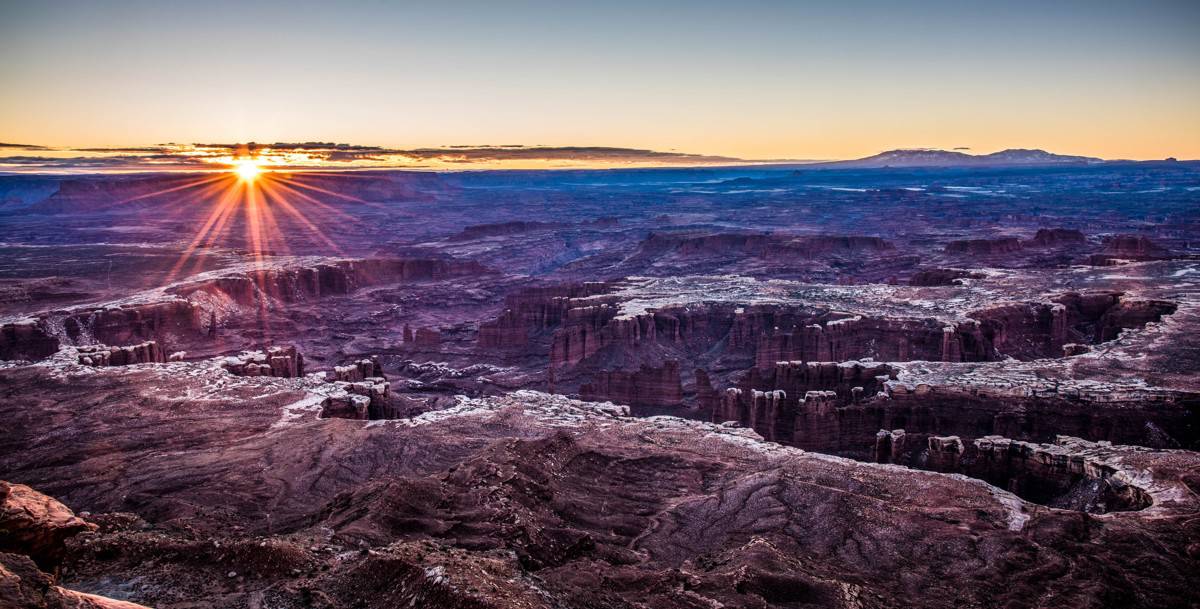 Emphasize the foreground with a high horizon line.
Emphasize the foreground with a high horizon line.
Everybody loves a clear blue sky, but it doesn’t make for the most interesting photos.
When you want to keep your viewer’s eye within the foreground, position your horizon line within the top third of your photo.
Using a Centered Horizon Line
There are definitely times when a centered horizon line is the best choice for your photo composition.
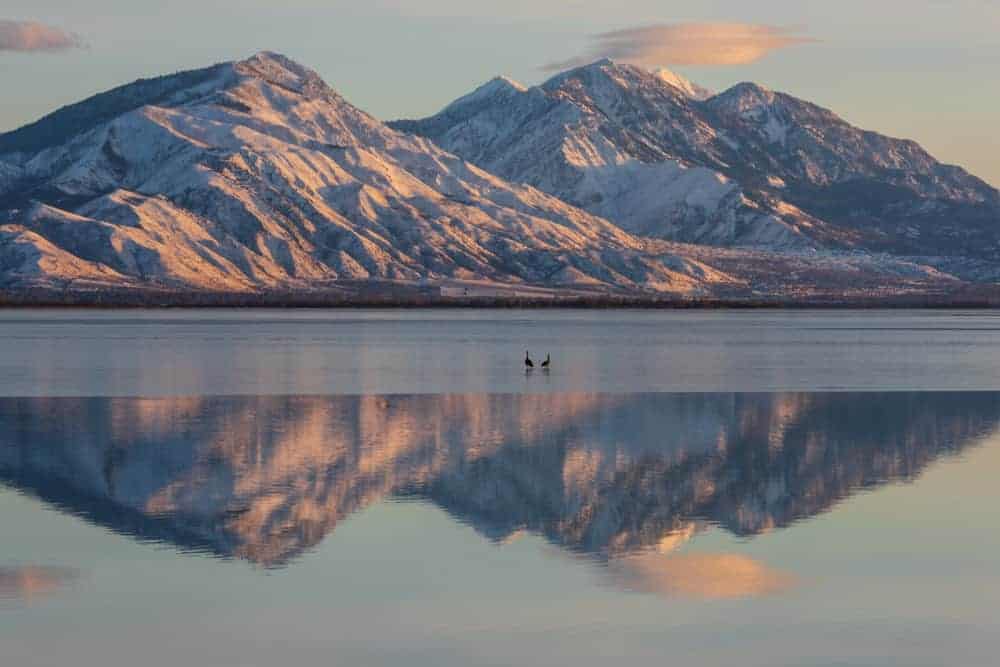 Put the horizon line in the center when taking pictures of reflections.
Put the horizon line in the center when taking pictures of reflections.
It is especially useful when you are shooting a scene with strong symmetry, such as the reflection shot above.
If you can’t choose between a dramatic sky and a striking foreground, emphasize them both with a centered horizon line.
Example: Creating Drama with Horizon Lines
The following photos were taking in Monument Valley in Arizona. Each of the three photos features a horizon line in a different part of the photo – low, high, and centered. Which scene do you prefer?
In the first photo, the sky is highlighted with a very low horizon line. While it creates an impression of wide open space, it does not highlight the most interesting aspects of the scene.
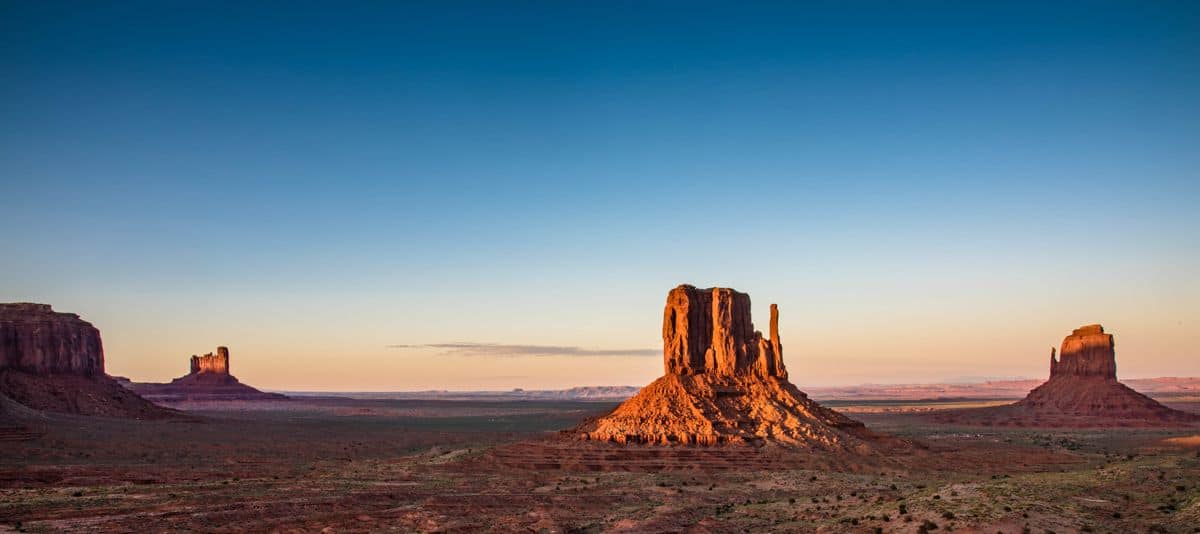 Example of a low horizon line.
Example of a low horizon line.
The second photo maintains a centered horizon, and it does a decent job of highlighting the vast landscape and the interesting land formations in a scene that is pleasing to the eye.
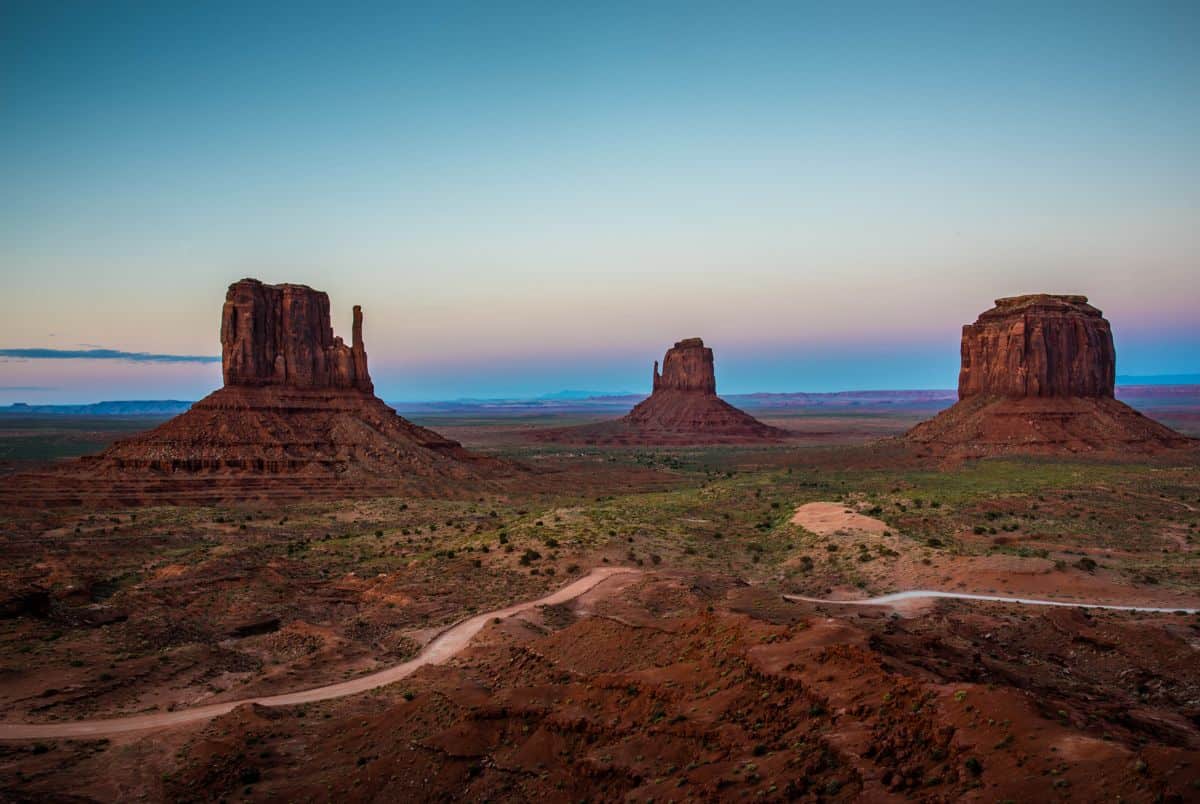 Example of the horizon in the center of a photo.
Example of the horizon in the center of a photo.
The third photo puts the focus largely on the landscape, highlighting the three large buttes, as well as the road running through the foreground. Less emphasis is put on the sky, but you still get a hint of the lovely colors in the sunset.
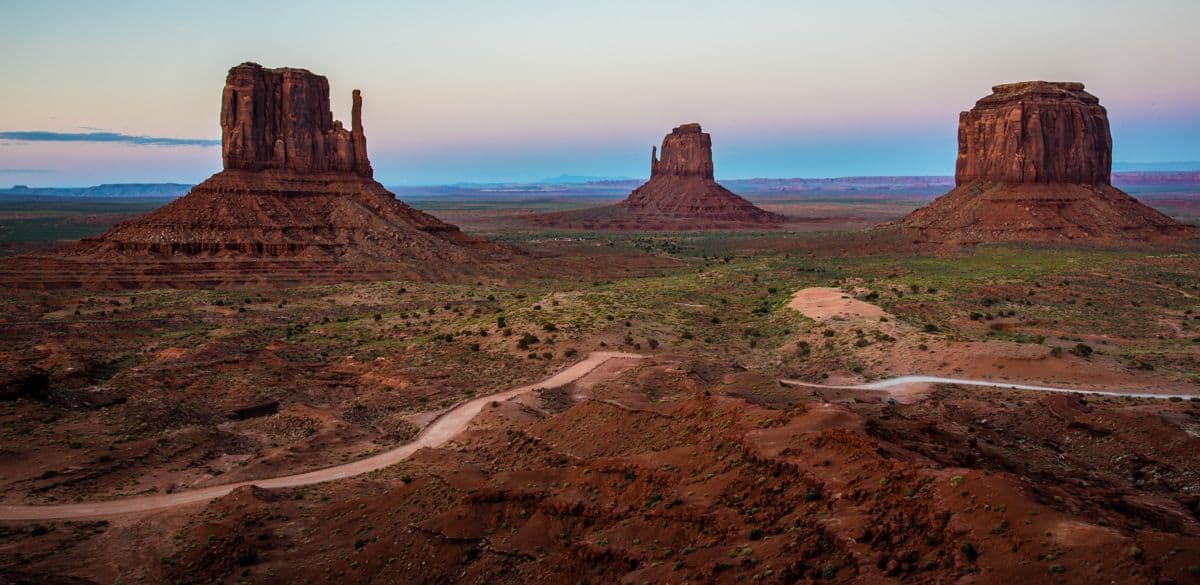 Example of a high horizon line.
Example of a high horizon line.
Experimenting with different horizon lines will help you understand photo composition and how different elements work together to create an extraordinary image.
IGNORING HORIZON LINES AND FOCUSING ON DETAIL
Not every photo you take will have a horizon line.
Ignoring the horizon altogether will allow you to focus on the details of your subject — perfect for macro photography, wildlife, and other shots where you’re filling the frame with your subject.




